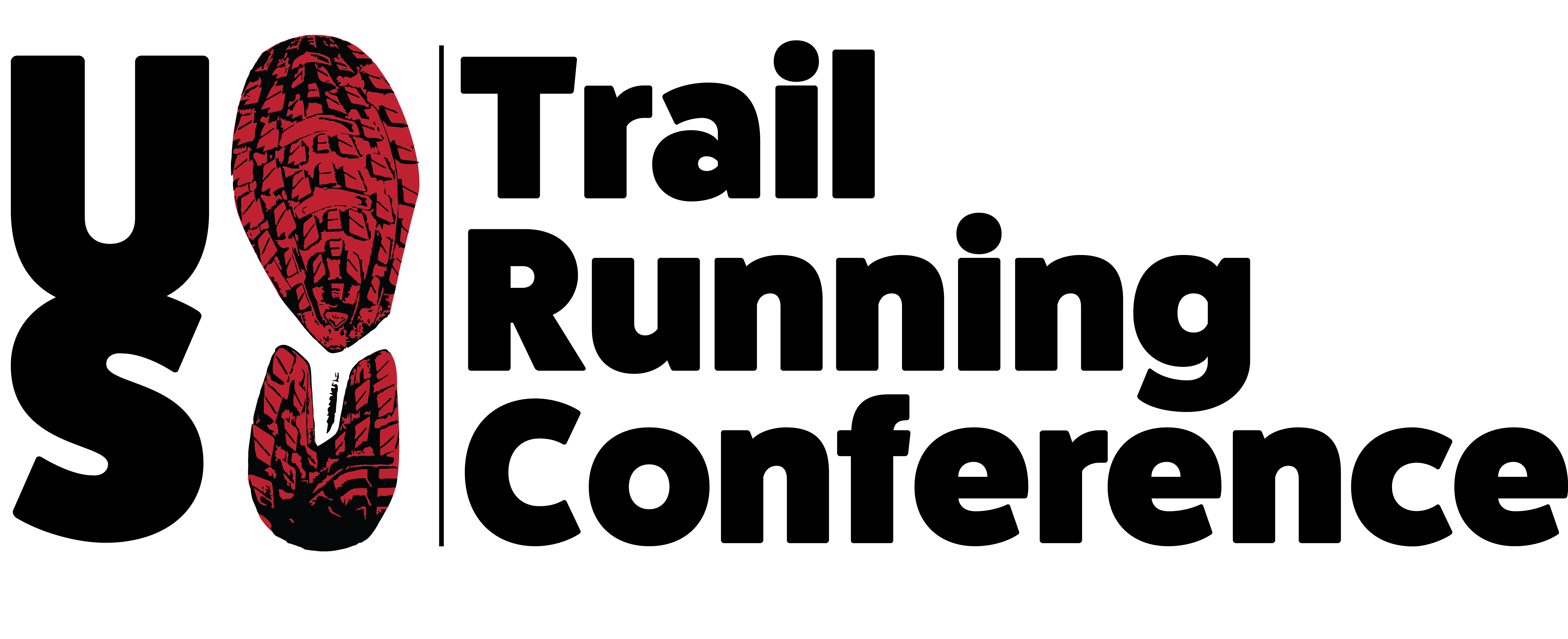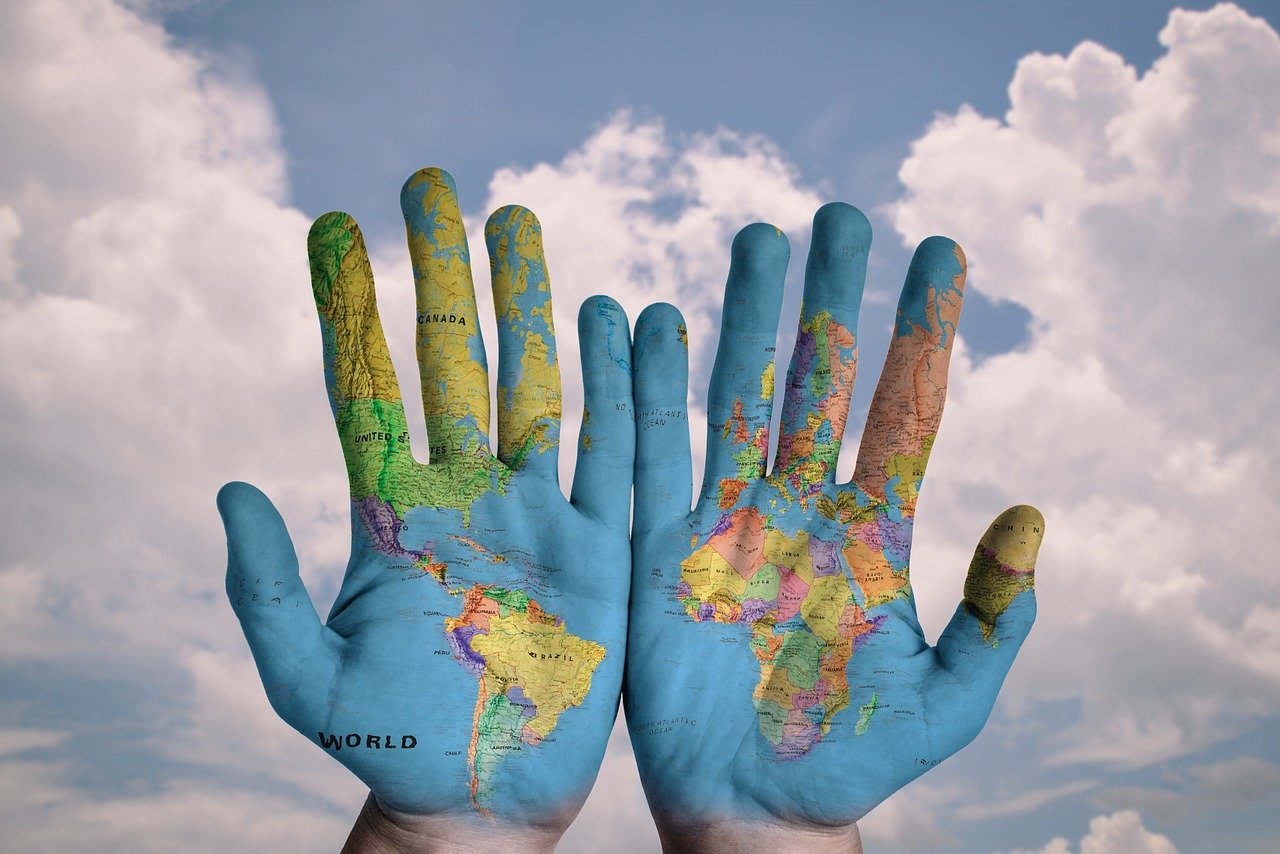It turns out that human beings love problem solving. We are not just good at it, we are often incredibly good at it. It’s in our blood, our DNA, and it has driven us to some incredible achievements on the way. One of the many amazing achievements came to the forefront of my mind recently.
Recently I was fortunate to have the second of my pair of COVID-19 vaccine shots, and was reminded of the incredible speed with which all variants of the COVID-19 vaccines have been developed. Normally vaccine development can take 10-15 years; the previous record for development was the mumps vaccine, and that took four years to bring to the population. For COVID-19 vaccines, the development time has been less than 12 months. A large part of the speed of development has been attributed to Worldwide collaboration between researchers. Otherwise we could still be waiting….
Whenever there is an urgent need for us to solve major problems, we work together to find a solution. Unfortunately, we are also incredibly adept at creating problems. Right now this planet, our only home, has a huge problem. The rate of change in our climate is accelerating, while we are only just beginning to understand the cumulative effects of other factors such as the release of methane from melting permafrost – methane is 84 times more potent as a greenhouse gas than carbon dioxide. We have a limited time to slow down and reverse the changes in our climate, and the need to take action grows each passing day.
If we don’t take action now to solve this problem, we could be too late to be able to interrupt the rate of change of other systems on our planet that will further accelerate the change in our climate. Climate action is something that will need a response from everyone in society – I thought it would be marvelous if we could find a way to mobilize a community of climate action advocates.
We were fortunate to have several expert panelists to speak about climate action at the 2020 US Trail Running Conference, including amazing trail and mountain runner Killian Jornet, Vic Thasiah (Runners for Public Lands), and Zoë Rom (Associate Editor for Trail Runner magazine). Something that one in particular said stood out to me – Dot Neely. She is an Environmental Educator & Vice President of the Fayetteville Natural Heritage Association Board, and has dedicated her life to advocate for preservation of natural habitat, family farms, and open space. Neely, when asked if there were any books she would recommend, went straight to Paul Hawken and The Ecology of Commerce. In his visionary book, Hawken argues that businesses must move away from destructive economic practices and instead move toward restorative ideals that can help solve our sustainability problems. “When science tells us clearly and without doubt that our present course of action is extinguishing life on earth, a total redesign of what it means to be in business is required.” (p.66)
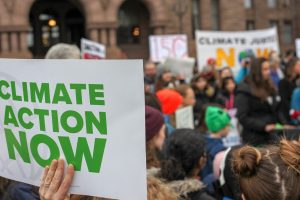 The idea of trail running businesses being engaged in restorative practices inspired me to think more about how far our business practices have led us away from being sustainable, and where we are now. Paul Hawken eloquently describes our current situation: “But look where we stand: we have decimated 97 percent of the ancient forests in North America; everyday US farmers and ranchers draw out 20 billion more gallons of water from the ground than are replaced by rainfall; the Ogalla Aquifer, an underwater river beneath the Great Plains larger than any body of water on earth, will dry up within 20 to 30 years at present rates of extraction; globally we lose 25 billion tons of fertile topsoil every year, the equivalent of all the wheat fields in Australia. These critical losses are occurring while the world population is increasing at the rate of 70 million people per year. Quite simply, our business practices are destroying life on earth. Given current corporate practices, not one wildlife reserve, wilderness or indigenous culture will survive the global market economy. We know that every natural system on the planet is disintegrating. Land, water, air and sea have been functionally transformed from life-supporting systems into repositories for waste. There is no polite way to say that business is destroying the world.” (The Ecology of Commerce, p.4). There is no better time than now for change to happen, for our sport to reflect and consider what we can be doing differently, as the path we are currently on is not sustainable.
The idea of trail running businesses being engaged in restorative practices inspired me to think more about how far our business practices have led us away from being sustainable, and where we are now. Paul Hawken eloquently describes our current situation: “But look where we stand: we have decimated 97 percent of the ancient forests in North America; everyday US farmers and ranchers draw out 20 billion more gallons of water from the ground than are replaced by rainfall; the Ogalla Aquifer, an underwater river beneath the Great Plains larger than any body of water on earth, will dry up within 20 to 30 years at present rates of extraction; globally we lose 25 billion tons of fertile topsoil every year, the equivalent of all the wheat fields in Australia. These critical losses are occurring while the world population is increasing at the rate of 70 million people per year. Quite simply, our business practices are destroying life on earth. Given current corporate practices, not one wildlife reserve, wilderness or indigenous culture will survive the global market economy. We know that every natural system on the planet is disintegrating. Land, water, air and sea have been functionally transformed from life-supporting systems into repositories for waste. There is no polite way to say that business is destroying the world.” (The Ecology of Commerce, p.4). There is no better time than now for change to happen, for our sport to reflect and consider what we can be doing differently, as the path we are currently on is not sustainable.
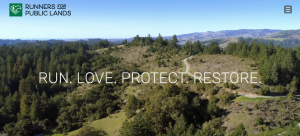 I was further inspired by two more climate activists that participated in the 2020 US Trail Running Conference. Our keynote speech was delivered by Vic Thasiah, Executive Director of Runners for Public Lands. Vic shared a key quote that awoke my imagination with a rush – no one person can do everything, however we can all do something!
I was further inspired by two more climate activists that participated in the 2020 US Trail Running Conference. Our keynote speech was delivered by Vic Thasiah, Executive Director of Runners for Public Lands. Vic shared a key quote that awoke my imagination with a rush – no one person can do everything, however we can all do something!
Vic added two FKT’s (Fastest Known Times) that he said were critically important for us as runners to consider:
- How fast our climate is changing
- How fast we as a society need to change what we are doing to effect or reverse climate change
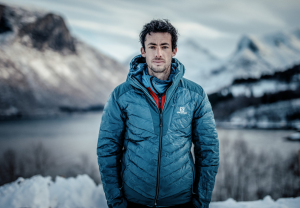 We were also fortunate to have the US launch of the Charter for Outdoor Friendly Sports from top trail and mountain runner, Kilian Jornet. Kilian’s Charter is a platform with the goal to promote a more sustainable practice for
outdoor sports, focusing on the impact of its different stakeholders. These goals target specifically the pollution generated through outdoor sports, the greenhouse gases
emitted, better management of natural resources, preserving land and biodiversity, and advocating for a more sustainable society. The charter is a product of years of developing a deep love for mountain and wilderness environments that Jornet has accumulated along with his work with the Kilian Jornet Foundation. Kilian Jornet comments: “I’m very pleased to share this project with the US trail running community, which I know has a deep connection with environmentalism and
preservation and I think it can help our sport to evolve towards a more sustainable
practice and lead other sports to do the same. ”
We were also fortunate to have the US launch of the Charter for Outdoor Friendly Sports from top trail and mountain runner, Kilian Jornet. Kilian’s Charter is a platform with the goal to promote a more sustainable practice for
outdoor sports, focusing on the impact of its different stakeholders. These goals target specifically the pollution generated through outdoor sports, the greenhouse gases
emitted, better management of natural resources, preserving land and biodiversity, and advocating for a more sustainable society. The charter is a product of years of developing a deep love for mountain and wilderness environments that Jornet has accumulated along with his work with the Kilian Jornet Foundation. Kilian Jornet comments: “I’m very pleased to share this project with the US trail running community, which I know has a deep connection with environmentalism and
preservation and I think it can help our sport to evolve towards a more sustainable
practice and lead other sports to do the same. ”
The combination of Vic’s keynote and Kilian’s innovative Charter inspired me to realize that we already have a community of climate action advocates – every trail runner across the United States! We are each naturally connected to and value our environment because we cherish spending time on the trails that we love! All we need to do is to create a simple toolkit that runners can follow, and that races, brands, and federations give us the means to share this information out to our eager network of activists who are ready to engage in restoration and sustainable practices for this incredible planet that we get to call home.
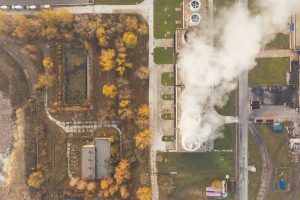 In 2018, greenhouse gas emissions from transportation accounted for about 28% of total U.S. greenhouse gas emissions, making this sector the largest contributor of U.S. greenhouse gas emissions. (epa.gov) A significant reason for this is that road travel and air travel in the U.S. is very easy, with few barriers, and very cheap pricing. For car travel consumers in the United States pay approximately one half to one quarter what Europeans or Japanese pay for petrol. The road systems here make travel over huge distances very easy, and a lot more relaxing than traveling over similar distances in many other countries.
In 2018, greenhouse gas emissions from transportation accounted for about 28% of total U.S. greenhouse gas emissions, making this sector the largest contributor of U.S. greenhouse gas emissions. (epa.gov) A significant reason for this is that road travel and air travel in the U.S. is very easy, with few barriers, and very cheap pricing. For car travel consumers in the United States pay approximately one half to one quarter what Europeans or Japanese pay for petrol. The road systems here make travel over huge distances very easy, and a lot more relaxing than traveling over similar distances in many other countries.
As a result, the United States has one of the highest proportions of income per capita spent on petrol, the highest number of cars owned per thousand persons, the highest number of kilometers traveled per capita, the lowest frequency of biking, the lowest public transport usage, and the highest road fuel consumption per capita. (Source, https://internationalcomparisons.org/environmental/transportation/). The situation regarding air travel also reflects the relative low costs involved for consumers. In 2018, there were more than twice as many airline passengers in the United States compared to China in second place. The US has a population that is one quarter the size of China’s. (Source https://www.citypopulation.de/en/world/bymap/airtrafficpassengers/).
A big part of the privileges we have living in the US is that all personal travel is relatively cheap, readily available, and has an impact on our individual carbon footprint. Both road and air travel are widely used by runners as mechanisms to reach a race or races, across the US. At present, none of these favorable travel opportunities have any mechanism for providing information for consumers in terms of carbon footprint – this needs to change, and change is only possible with feedback.
What can we do? The first thing is that we need to be open to change, and ready to take ownership. Thinking this is the way we have always done this, does not help us to see that we are potentially blinding our eyes to a solution that has been staring us in the face. We need to look at everything we do as a sport, and stop, reflect, and consider: is this being restorative, is this the best we can do given everything that we know, and that science can help us discover.
An alarming factor here that remains hidden from our view is that we don’t get to see the direct relationship between carbon emissions we create, the increase in land and ocean temperatures, the death of coral reefs, the acid rain that falls from the sky, and the extinction of species that share this planet with us.
An alarming factor here that remains hidden from our view is that we don’t get to see the direct relationship between carbon emissions we create, the increase in land and ocean temperatures, the death of coral reefs, the acid rain that falls from the sky, and the extinction of species that share this planet with us. Here are some ideas to start with, none of which are original, and many of which have been expressed by my learned colleagues at various times over the last few years at the US Trail Running Conference and in other conversations.
First, individual carbon footprint: Whenever we drive to a race, or to go and run, or do anything that means we start up and drive our inefficient fossil fuel burning carbon dioxide emitting vehicles, then we do so from a position of privilege. We all need to take responsibility for the carbon that we produce – yes, we can drive electric cars, however while we are charging them the electricity we use is often producing emissions. Once we can produce all our energy with net zero emissions, it makes sense to give back to our planet, to help restore it to it’s balanced nature before the industrial revolution arrived. We can each purchase carbon offsets based on our mileage at the end of every year. This isn’t necessarily a huge expense either – for example through Native Energy, a carbon offset provider, the cost of purchasing carbon offset for a small petrol engined car for 12,000 miles in a year is around $60. Simple, easy, and effective if the trail running community gets on board. That mileage and car type equates to 3.63 tonnes carbon – the last statistics I saw showed there are at least 17 million trail runners in the US – if we each did this and only purchased carbon offsets, we could reduce the amount of carbon emissions by 62 million tonnes. A step in the right direction.
I searched for data on average miles driven or traveled to trail races in the US, and noticed something telling. The output generated race distances, not travel distances, yet that could potentially have the biggest impact of the complete carbon footprint of that race! There is a simple solution to this challenge – every registration platform can include a check box system as an integral part of the registration process for each and every race they serve. The system knows the location of the race, and they know your location – all they need to know in addition is how you plan to travel to that race, and then a simple calculation and a small additional charge to you that the registration platform then collects and passes on to a carbon offset provider.
 UltraSignup, the presenting sponsor for the race director segment of the US Trail Running Conference and webinar series, are already working on developments that their “customers will experience as exciting ways for them to easily get involved in doing their part to restore the world through the sport we all love.” (David Callahan, UltraSignup partner). As a sport we can partner with carbon offset providers to maximize the impacts of the offsets we enable. For example, Hawken in his introduction to Drawdown, says “When you add up the impact on carbon sequestration and storage, forest protection and tropical and temperate forest restoration together are the most powerful solution available to address global warming.”
UltraSignup, the presenting sponsor for the race director segment of the US Trail Running Conference and webinar series, are already working on developments that their “customers will experience as exciting ways for them to easily get involved in doing their part to restore the world through the sport we all love.” (David Callahan, UltraSignup partner). As a sport we can partner with carbon offset providers to maximize the impacts of the offsets we enable. For example, Hawken in his introduction to Drawdown, says “When you add up the impact on carbon sequestration and storage, forest protection and tropical and temperate forest restoration together are the most powerful solution available to address global warming.”
Second, races and events carbon footprint: As with the individual carbon footprint, calculators are available that make estimation of emissions a relatively simple process. Race and event organizers can also take leadership in sharing information not only about their carbon footprint, but also the amount of waste they produce. Without previous data to use as a template, my own thinking is to provide data on total carbon footprint and waste as well as carbon footprint and waste per participant. Some brands, such as Allbirds and Ultimate Direction, are already stepping up and providing this data for consumers as well as focusing on natural or recycled materials. I plan to introduce this information for the 2020 US Trail Running Conference in the next few weeks, and encourage all organizers and race directors to follow suit. We have a great opportunity to take leadership in this critical area, so that consumers can make informed choices on where they invest their money.
In the example I gave at the beginning of this feature, the COVID-19 vaccine solutions resulted from using collaborative methods to crack the problem. The opportunity to be collaborative also opened the door to innovation, which helped to drastically reduce development time. Albert Einstein, a very smart man by all accounts, once said, “We cannot solve our problems with the same thinking we used when we created them.” We need to innovate, to rethink our responses to these issues, and develop new ways to resolve the climate change challenge, to each take responsibility for the contributions we are making to climate change, while at the same time working collaboratively and sharing resources, ideas, and innovations. The need is urgent, and by doing this we can save precious time, and help save our planet.
I am excited to share these potential solutions with you. Now is the time to take a fresh look at the sport that we love, and to focus on what we can do as a community to move trail running to become the restorative sport that it has always had the capability to be. These are some initial ideas that I have shared, and I look forward to exploring further solutions to the problem of climate change. The wise and eloquent Paul Hawken reminds us of the simplicity with which we can view the problem we face: “We see global warming not as an inevitability but as an invitation to build, innovate, and effect change, a pathway that awakens creativity, compassion, and genius. This is not a liberal agenda, nor is it a conservative one. This is the human agenda.” (Drawdown.)
It’s time for us as active and engaged human beings to step up, to awaken, take decisive collaborative action, and have an impact both personally and as an entity.
Join us for the 9th annual US Trail Running Conference, October 27-30, 2021, in Fayetteville, AR, presented by UltraSignup. Climate action will be a central focus of the Conference – register now at https://ustrailrunningconference.com/register/
We also have the fourth session in our webinar series for Race Directors that focuses on “Empowering a community of climate action champions.” The session is scheduled for April 22, 2021, at 11 am to 12 noon MST. You can register for the session, or the complete series, at https://ustrailrunningconference.com/webinar-series/
